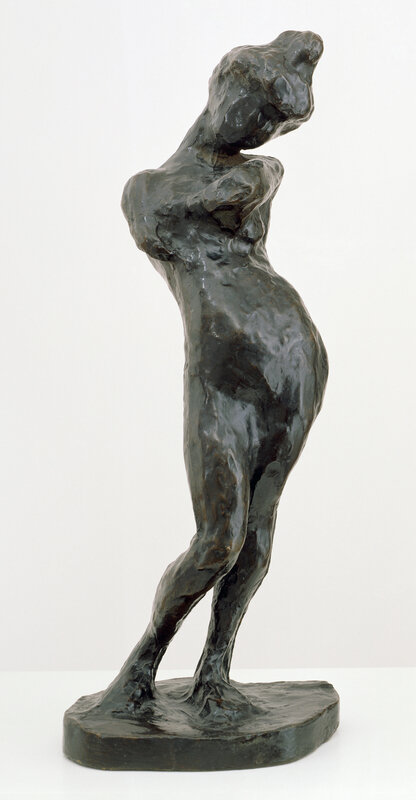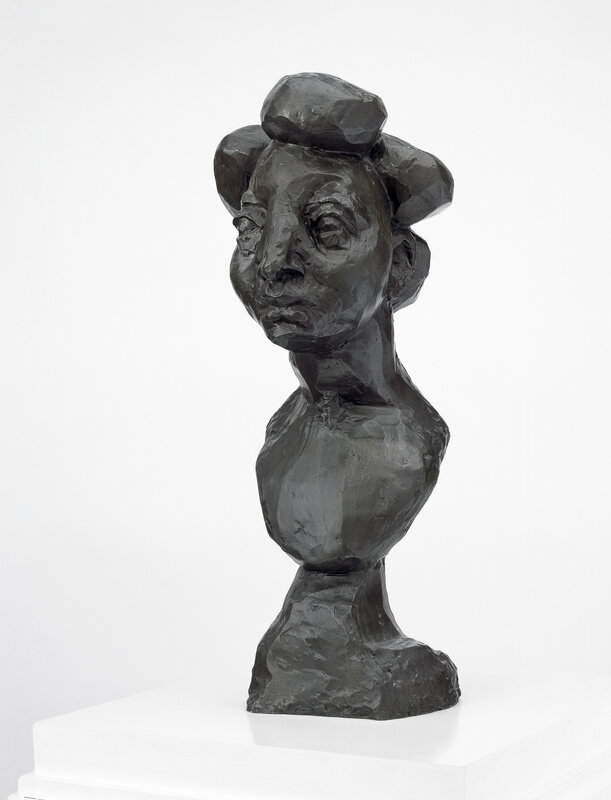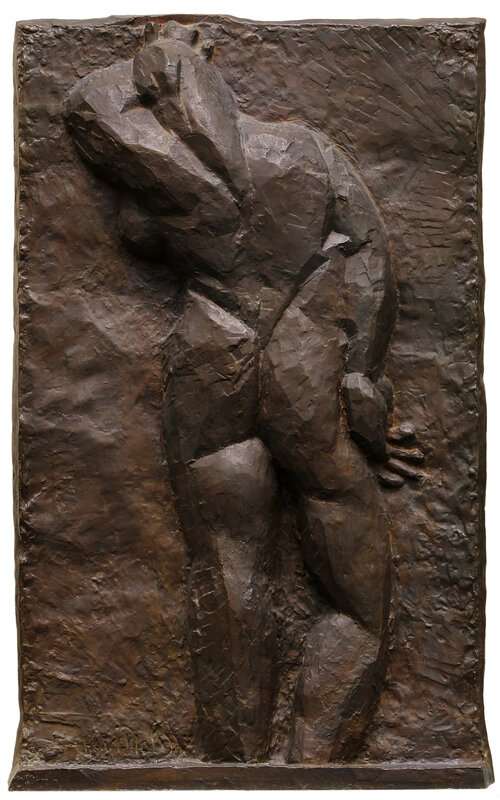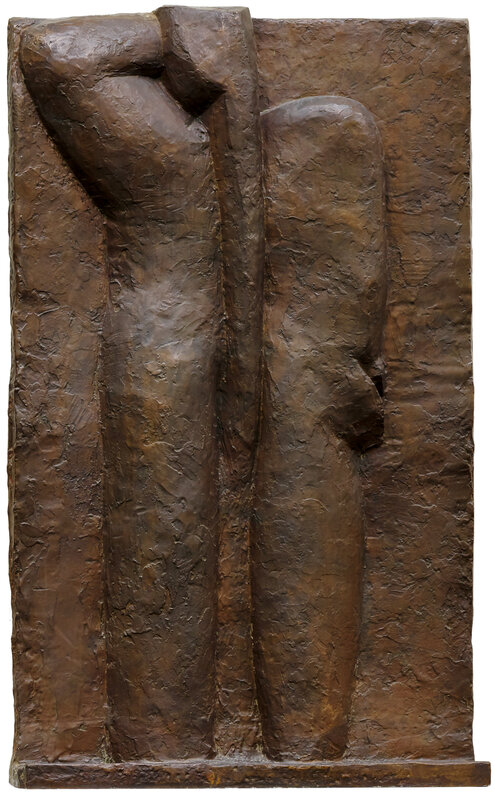Exhibition at Kunsthaus Zurich presents Henri Matisse as sculptor
Edward Steichen, Henri Matisse travaillant à "La Serpentine", 1913 © ADAGP, Paris. Photo © RMN-Grand Palais (musée d'Orsay) / Gérard Blot.
ZURICH.- From 30 August to 8 December 2019 the Kunsthaus Zürich presents Henri Matisse as sculptor, in an exhibition that brings bronzes in various states together with the sources of his inspiration, including nude photographs and African sculptures. The art education programme is designed to appeal equally to newcomers with an interest in art, specialists and families.
Over 70 works, accompanied by reproductions of historical photographs, films and music, offer a vivid presentation of Matisse’s artistic method. Installed in the large exhibition gallery of the Kunsthaus, the exhibition opens with sculptures by Rodin, Maillol and Bourdelle whom Matisse – known for his colourful paintings – strove to emulate before breaking free and striking out on his own. His figures undergo a transformation that is akin to a metamorphosis: while the earliest works still bear the influence of naturalistic ideals, later creations and reworkings of the same motif become increasingly abstract.
Hans Marsilius Purrmann, Matisse pose dans son atelier, 1900–1903. Archives Henri Matisse, Issy-lesMoulineaux, © 2019 ProLitteris, Zurich.
FORMAL PROGRESSION IN SCULPTURE, PAINTINGS AND DRAWINGS
A formal progression – as in the bronze reliefs ‘Nu de dos I–IV’ – from a seemingly naturalistic approach to radical stylization can also be seen in reclining nudes (‘Nu couché I–III’), graceful figurines (‘Madeleine I–II’) and voluminous busts (‘Jeannette I–V’).
There are parallels in the work of Matisse as painter and draughtsman. For the first time this exhibition examines the relationships between the sculptures and his paintings, cut-outs and drawings through the prism of metamorphosis. One striking fact is that Matisse did not simply document the processes of transformation for his own private use, but actually exhibited the documentary photographs together with his paintings (e.g. ‘Nature morte au coquillage sur marbre noir’, 1940). The Kunsthaus Zürich explores the rationale behind this public displaying of the creative process – an aspect that no exhibition has examined in detail before.
Henri Matisse, Nu couché I (Aurore), 1907, Bronze, 34,4 x 49,9 x 27,9 cm, The Baltimore Museum of Art: The Cone Collection, formed by Dr. Claribel Cone and Miss Etta Cone of Baltimore, Maryland. Photo: Mitro Hood © Succession Henri Matisse/ 2019 ProLitteris, Zurich.
Henri Matisse, Nu couché III, 1929, Bronze, 18,7 x 46,5 x 15,1 cm, Hirshhorn Museum and Sculpture Garden, Smithsonian Institution, Washington, DC, Gift of Joseph H. Hirshhorn, 1966. Photo: Cathy Carver, Hirshhorn Museum and Sculpture Garden © Succession Henri Matisse/2019 ProLitteris, Zurich.
Henri Matisse, Nu couché de dos, 1944, Fusain sur papier marbré «Aquarelle Canson France», 38,2 x 56,6 cm, Musée Matisse, Nice. Photo: François Fernandez © Succession Henri Matisse/2019 ProLitteris, Zurich
Henri Matisse, Madeleine I, 1901, Bronze, 54,6 x 19,4 x 17,2 cm, San Francisco Museum of Modern Art, Bequest of Harriet Lane Levy. Photo: Ben Blackwell © Succession Henri Matisse/ 2019 ProLitteris, Zurich.
Henri Matisse, Jeannette III, 1910/1911, Bronze, 60,3 x 26 x 28 cm, Musée d‘Orsay, Paris, déposé au Musée Matisse, Nice, don de Mme Jean Matisse, 1978. Photo: François Fernandez © Succession Henri Matisse/ 2019 ProLitteris, Zurich.
Henri Matisse, Jeannette IV, 1910/1911, Bronze, 61,5 x 21,5 x 26 cm, Musée d‘Orsay, Paris, déposé au Musée Matisse, Nice, don de Mme Jean Matisse, 1978. Photo: François Fernandez © Succession Henri Matisse/ 2019 ProLitteris, Zurich.
Henri Matisse, Jeannette V, 1916 Bronze, 57,3 x 17,9 x 28 cm, Musée d‘Orsay, Paris, déposé au Musée Matisse, Nice, don de Mme Jean Matisse, 1978. Photo: François Fernandez © Succession Henri Matisse/ 2019 ProLitteris, Zurich.
Henri Matisse, Margot, 1906, Huile sur toile, 81 x 65 cm, Kunsthaus Zürich, 1925 © Succession Henri Matisse/ 2019 ProLitteris, Zurich
INSPIRED BY AFRICAN SCULPTURE AND PHOTOGRAPHY
In addition to the artistic method of metamorphosis, the exhibition looks at other key aspects of Matisse’s sculptural oeuvre. It shows how he engaged with Rodin and the art of Antiquity and the Renaissance, and reveals how the creative process was preceded by an intensive engagement with photographs and African sculptures.
Atelier de la région de Ségou, Bamana, Mali, Personnages Jomooni féminin et masculin, début du 20e siècle, Bois et métal, H: 40,5 et 43,3 cm Collection privée, anciennement collection Matisse. Photo: Xavier Martinez.
Auguste Rodin, Jean d‘Aire, 1887, Bronze, 205 x 68 x 67 cm, Kunsthaus Zürich, dépôt du Canton de Zurich, 1949.
«Raccourci de jambes (modèle de dos)» dans: Mes Modèles, probablement 20.11.1906, p. 671. Archives Henri Matisse, Issy-les Moulineaux.
BLURRING OF SEXUAL CHARACTERISTICS
The stylistic devices of the arabesque that are much in evidence in ‘La serpentine’ (1909) characterize almost all of Matisse’s sculptures. The blurring of sexual characteristics, as in the four ‘Nus de dos’ and the ‘Petit torse mince’ (1930), is a further distinctive element of his approach.
Henri Matisse, La serpentine, 1909 Bronze, 56,2 x 28,8 x 19,5 cm, Statens Museum for Kunst, Copenhagen, photo: SMK Photo/Jakob Skou-Hansen © Succession Henri Matisse/ 2019 ProLitteris, Zurich.
Henri Matisse, Nu de dos I, 1908–1909 Bronze, 190 x 116 x 15 cm, Kunsthaus Zürich, 1960, © Succession Henri Matisse/ 2019 ProLitteris, Zurich.
Henri Matisse, Nu de dos II, 1913 Bronze, 190 x 118 x 19 cm, Kunsthaus Zürich, 1960, © Succession Henri Matisse/ 2019 ProLitteris, Zurich.
Henri Matisse, Nu de dos III, 1913–1916 Bronze, 190 x 114 x 16 cm, Kunsthaus Zürich, 1960, © Succession Henri Matisse/ 2019 ProLitteris, Zurich.
Henri Matisse, Nu de dos IV, 1930 Bronze, 190 x 114 x 16 cm, Kunsthaus Zürich, 1960, © Succession Henri Matisse/ 2019 ProLitteris, Zurich.
MAJOR LOANS FROM ALL OVER THE WORLD
In the case of the bronze ‘Nu de dos’ reliefs, it took Matisse 20 years to work through the metamorphosis of a single motif to its ultimate conclusion. The protracted nature of the process tells us that the creation was never intended as a series – whatever the visitor standing before the four larger than life-size reliefs today may think.
Curator Sandra Gianfreda has put together this enlightening presentation with the help of loans from famous collections in Copenhagen, Washington, Baltimore, San Francisco, Paris, Moscow and Nice. As cooperation partner, the Musée Matisse in Nice has contributed the bulk of the loans and will take over the exhibition after it leaves Zurich (7.2.–6.5.2020; co-curator Claudine Grammont). As this exhibition demonstrates, Matisse was an artist who was capable of much more than simply painting. His sculptures are a milestone in modern art.
Atelier de Matisse dans l‘ancien hôtel Regina de Cimiez (Nice), 1953, Archives Henri Matisse, Issy-les-Moulineaux © Succession Henri Matisse/ 2019 ProLitteris, Zurich.

/https%3A%2F%2Fprofilepics.canalblog.com%2Fprofilepics%2F1%2F0%2F100183.jpg)
/https%3A%2F%2Fstorage.canalblog.com%2F03%2F02%2F119589%2F96711876_o.jpg)
/https%3A%2F%2Fstorage.canalblog.com%2F11%2F31%2F119589%2F94773502_o.jpg)
/https%3A%2F%2Fstorage.canalblog.com%2F20%2F83%2F119589%2F94772815_o.jpg)
/https%3A%2F%2Fstorage.canalblog.com%2F26%2F72%2F119589%2F75604929_o.jpg)
/https%3A%2F%2Fstorage.canalblog.com%2F59%2F60%2F119589%2F26458628_o.jpg)





















/http%3A%2F%2Fstorage.canalblog.com%2F25%2F77%2F119589%2F129711337_o.jpg)
/http%3A%2F%2Fstorage.canalblog.com%2F62%2F17%2F119589%2F127198849_o.jpg)
/http%3A%2F%2Fstorage.canalblog.com%2F17%2F87%2F119589%2F122324247_o.png)
/http%3A%2F%2Fstorage.canalblog.com%2F00%2F55%2F119589%2F120707983_o.jpg)